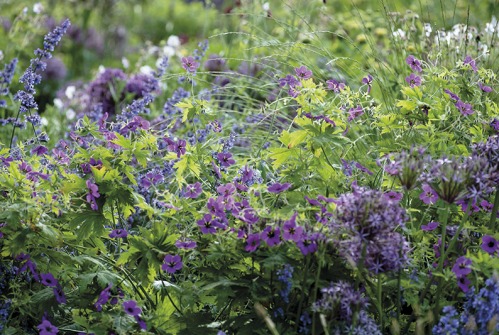All You Need to Know About Wisteria

Wisteria might be the stuff of fairy-tales, but with a little love, care and attention, growing this heavenly scented climber is easier than you think
Unlike the majority of climbing plants that rely on suckers, roots and tendrils to attach themselves to structures, wisteria twine their stems around anything nearby and hoist themselves off the ground in search of sun. Capable of growing to around 20 metres high and ten metres wide, the largest wisteria vine recorded spans almost an acre.
While the majority of us grumble at the prospect of a rain-soaked summer, wisteria will thrive in the endless downpours. Favouring damp woodland and moisture-rich banks near streams, emulating these conditions will give you a head start to creating your own pleasure garden. Flowering from April through June, wisteria is somewhere between a fussy child and grumpy old man when it comes to pruning and propagation.
Richly fragrant, especially during the evening, wisteria are deciduous vines native to the eastern states of North America, China and Japan. There are ten species in the genus, the most common is the Chinese wisteria sinensis. Its deep lilac flowers bloom in late spring and hang down in elegant columns when draped over anything in its path.
Wisteria needs pruning twice a year to remain floriferous, once in July or August and again around January. Summer pruning involves cutting back the green shoots of the current year’s growth to five or six leaves after flowering. This not only controls the size of the plant but encourages it to form more buds rather than excess greenery. Come winter, cut back the same growths to two or three buds when the plant is dormant and lifeless, this ensures flowers will not be obscured by leaves during the next growing season.
The easiest way to grow wisteria is to train it to grow against a wall using horizontal support wires. Three milimetres of galvanised steel set 30cm apart should be enough to encourage the plant to build a strong spur system. The galavanised steel is sturdy enough to bear the plant’s weight without cutting into the branch. Wisterias with long flower racemes (hanging flower spikes) are at their most beautiful when draped over pergolas or arches. To make the most of the blossom it’s a good idea to reduce the number of racemes by thinning them out to give those that remain plenty of space to develop further.
Training wisterias to grow into a small tree can often be detrimental to the tree itself and makes pruning considerably more difficult. Flowering may be affected if the the tree’s leaf canopy is dense and restricts sunlight, and the plant should always be planted on the south side of the tree, at least one metre away from the trunk. Drive a four by four inch wooden post 12 inches into the ground, positioning the post one to three inches away from the base of the young wisteria vine. Use a post that is 12 inches longer than the desired height of the wisteria tree’s trunk. The extra 12 inches will anchor the post underground. Next select the most vigorous main stem of the wisteria to become the tree’s trunk. Remove all side shoots from along this stem with a pair of pruning shears. Make each cut a quarter inch above where the side shoot joins the main stem to avoid causing damage. The top of the main stem should be cut once it reaches the top of the post and prune any dead, crossing or crowded branches in the late winter when the wisteria is dormant. Prune back all side shoots in the tree’s canopy to a length of 12 inches.
Training wisterias in a border or large pot is less difficult but requires the same amount of care and attention. Start with a young single stemmed plant and insert a stout support next to it, anything from four to five foot will suffice. The wisteria should be planted to the same depth as it was in its pot from the nursery, with the roots spread out before planting. Allow the plant’s leading stem to grow until it reaches the top of the support before removing the tip the following February to encourage the formation of side shoots. Prune these side shoots in winter to around 15-30cm to gradually build up a head. As the plant’s head develops over the year, prune in August, cutting above the seventh leaf and removing any shoots that aren’t needed to extend the head. After that, any weak growth can be cut out and regular pruning twice a year should be enough. Whatever the plant is being trained to climb must be sturdy since mature wisteria can be very strong with heavy trunks and stems that can bend latticework, crush thin wooden posts and even strangle large trees. Trails of winding wisteria may look delicate and pretty but given the right conditions it can damage to gutters, window frames and similar features.








